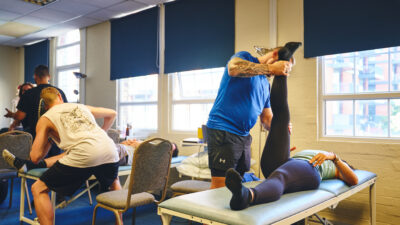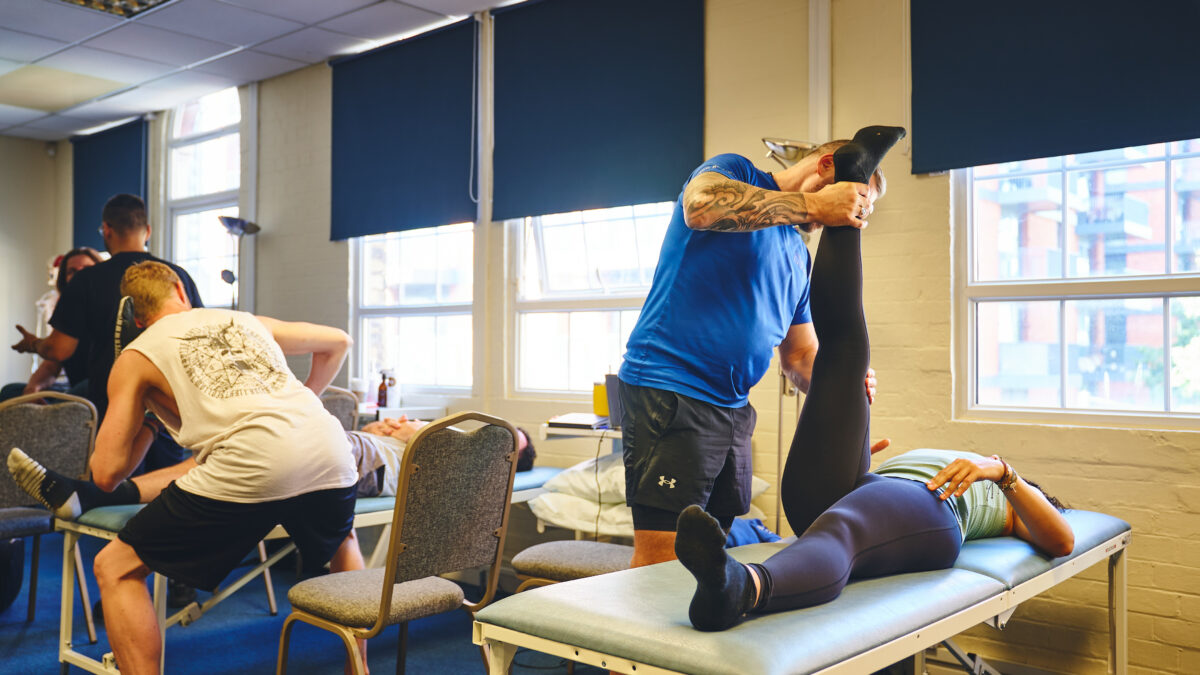



Understanding the Difference Between Extrinsic and Intrinsic Biomechanics
Biomechanics, the science of movement, is a broad and intricate field. Today, we’ll explore two critical areas: extrinsic biomechanics and intrinsic biomechanics. We’ll clarify how they differ, how they influence each other, and why understanding both is essential.
What is extrinsic biomechanics?

Extrinsic biomechanics focuses on observable movements. It’s about what we see when someone performs an action, such as a client’s knee buckling inward (knee valgus) during a squat. Basic training might prompt us to correct this by telling the client to “push their knees out.” While this can sometimes work, persistent issues may require a deeper analysis through intrinsic biomechanics.
What is Intrinsic Biomechanics?
Intrinsic biomechanics delves into the anatomical substructures—myofascial, skeletal, and neural—behind movements. It seeks to understand why a movement occurs in a particular way. Using the knee valgus example, a practitioner trained in intrinsic biomechanics would evaluate the pelvis, spine, shoulders, knees, and feet. This comprehensive assessment helps identify the root causes of movement issues, which can involve multiple dysfunctions and compensations within the body’s kinetic chains.
Once the problematic body part and substructure are identified, the practitioner can prescribe targeted interventions. They can also re-test immediately after the intervention, providing objective evidence of the cause of the client’s movement limitations.

Similarities and Differences
Similarities:
Differences:
Importance in understanding the difference – case study example

Consider a runner showing extrinsic over-pronation. Video gait analysis might suggest using orthotics or specific shoes to correct this. However, intrinsic biomechanics can reveal underlying causes such as:
Without assessing intrinsic biomechanics, these potential causes might be missed, leading to incomplete or ineffective interventions.
Conclusion
Extrinsic biomechanics can be misinterpreted without an understanding of intrinsic biomechanics. Biomechanics Coaches, specialising in intrinsic biomechanics, possess a deeper knowledge of the musculoskeletal system. They can assess clients more thoroughly and design tailored programmes to enhance movement efficiency.
Interested in a Career in Biomechanics?
If you’re passionate about biomechanics, consider becoming a Biomechanics Coach! Contact us at info@biomechanicseducation.com to discuss a career in intrinsic biomechanics and learn how you can make a difference in the science of movement.
